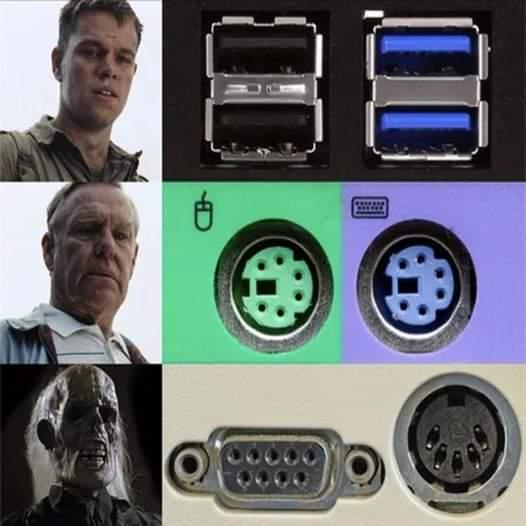this post was submitted on 19 Dec 2023
646 points (100.0% liked)
Memes @ Reddthat
1009 readers
2 users here now
The Memes community. Where Memes matter the most.
We abide by Reddthat's Instance Rules & the Lemmy Code of Conduct. By interacting here you agree to these terms.
Rules
- No NSFW content
- No bigotry - including racism, sexism, ableism, homophobia, transphobia, or xenophobia. Code of Conduct.
- Be respectful, especially when disagreeing. Everyone should feel welcome here.
- No porn.
- No Ads / Spamming.
founded 1 year ago
MODERATORS
you are viewing a single comment's thread
view the rest of the comments
view the rest of the comments

Commodore 64 and Atari 2600 here.
That bottom one is the C64 joystick port...
That's a serial port, son.
Wasn't the C64 joystick port serial? Or has 40 years muddled it?
No, the C64 (and other computers of the time) used a DSUB9 for the joystick connector. Top row 1-5: Up, Down, Left, Right, PaddleB; bottom row 6-9: Fire, +5V, GND, PaddleA. This was the common layout across all systems back then. The DSUB15 analog joystick port was later. And no, it was no serial port, just raw IO pins.
They're both DE-9 connectors, but the C64 joystick port is not serial. Each direction on the stick and the fire button are connected to one of the pins on the connector, and a when direction (or the fire button) is pressed that pin has a voltage applied. So effectively it's a parallel connection.
In a serial connection one of the pins is "send" pin and another is "receive". The device then sends data as a bitstream over those two pins.
That's what I thought at first, too. The DIN connector on the right being the power supply connector, and the DSUB9 being the joystick port (one of them).
BUT: In every C64 model I've seen, there is the power switch right between the DIN and DSUB9. Which, in the photo, is not. So it is not a C64.
It could still be a joystick port, as DSUB9 was the most common joystick port form back then, before the DSUB15 commonly used on PCs for analog joysticks were a thing. Actually, serial ports back then used the DSUB25 connector. DSUB9 "reduced serial ports" came later.
Another common use of DSUB9 was for VGA before the three-row DSUB15. The DIN connector was commonly used for audio but also (composite) video.
My personal guess is that the bottom picture shows the video output of a computer, with the DSUB9 being an old-style VGA and the DIN being audio+composite video.